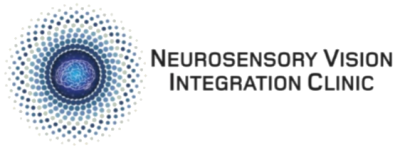Frequently Asked Questions
How is the Neurosensory Vision Integration Clinic therapy different from traditional vision therapy?
In our office we offer a new and advanced treatment approach, based on the science of neuroplasticity. It focuses on training the largest part of the visual system – the other 70% – which is the “neuron pathways that connect the eyes to the brain”.
Think of these pathways like your personal internet. Just like your internet at home, if these pathways are working at high speed capacity, you too will be able to:
- – Take in information visually faster
- – Read quicker
- – Learn more (e.g. homework is not a struggle)
- – Pay attention longer
- – Be able to respond accurately to an oncoming ball when playing a sport
The opposite is true, too! Just like the same frustration that happens when dealing with a slow home internet, you too will feel that same frustration when reading or doing work if your visual pathways are working slowly. This is especially true for children – they read slower, learn less and have difficulty paying attention longer. At work, you can experience overall fatigue, visual fatigue and less productivity.
The benefit is that treatment results will occur faster and will have a long lasting effect. This unique treatment approach is based on the latest research of neuroplasticity.
Neuroplasticity shows that the brain is trainable at any age and through our program, we are training 100% of the visual system. What this means to our patients is that our treatment is more cost effective. For instance, patients that might traditionally do therapy for 9-12 months can use our program which only takes about 4-6 months on average.
What conditions can this type of vision therapy help?
– Dyslexia
– Ambloypia (lazy eye)
– Learning Related Vision Problems
– Auditory Processing Disorders
– Strabismus
– Acquired Brain Injuries (Concussion, Stroke)
– Convergence Insuffficiency
– Retained Primitive Reflexes
– Sensory Processing Disorders
– Visual Processing Disorders
Why Dr. Ingelse and Dr. Ahrens?
How long does Vision Therapy take?
When will we start seeing results and improvement?
How many hours of treatment are needed?
Do you accept insurance?
Is there any way I can get a discount?
Can Vision Therapy actually help my child’s reading?
In summary, our treatment does not teach your child to read, but it does activate and strengthen the vision pathways that your child needs when reading – again, like a faster internet. The faster the speed of the connection, the more data can be processed. Imagine using a dial-up connection compared to a T4 line. This is why children can absorb visual information faster, read more fluently and ultimately learn faster and be more productive.
